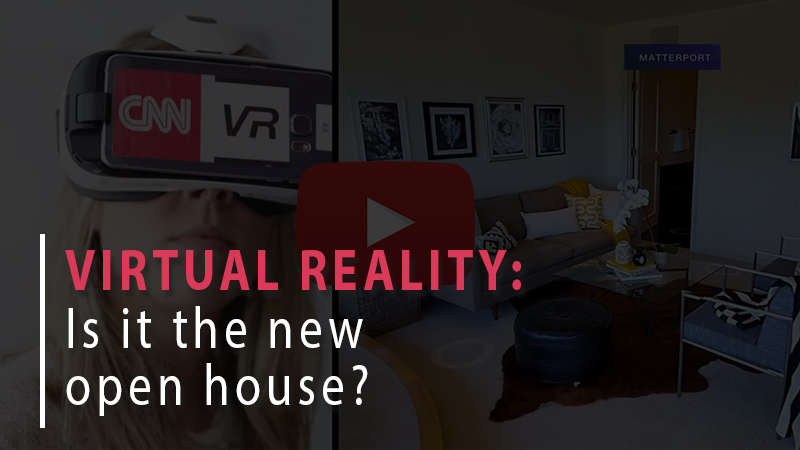The new wave of virtual reality tools for the marketing of real estate seems to be growing in popularity, although I suspect there is still a bit of division amongst agents and buyers. Some people love it, and some people hate it. For those who love it it’s a wonderful way to market and view a property, to find out exactly how the home is laid out, without having to physically visit the property.
And for buyers who are out of town or interstate that’s a big, big advantage.
For those who hate VR they say it is difficult for the viewer to use if they are not tech savvy, that it gives away too much information (meaning the agent doesn’t get a chance to talk with the potential buyers because they don’t get to that contact stage), and that they are too expensive.
I suspect that both sides are making valid points.
Here’s a video from CNN that shows a little more about how this VR process works:
There were some interesting statements made in that news clip:
Typically real estate companies use photos and videos to sell homes online. But it’s only a 2D experience. That’s where real estate companies are investing in virtual reality.
… “Open houses are only a couple of hours a week. But when you have virtual reality we can be open 24 hours a day, 7 days a week, 365 days a year.”
It’s certainly true that virtual reality offers the chance for the viewer to view 360 degrees rather than be limited to the field of view of the still photo, or the video (although a video can pan around a room and show it all just as well, so a video tour could be regarded as a kind of 3D experience as well).
Virtual reality also feels more like a tour of an open home in that the viewer has control of what they see, although high quality photography with great lighting and crystal clear views out the windows (often better than what you see in a VR tour) can feel very, very lifelike as well. And of course a walk-through video can be a wonderful experience, also very much like a walk-through a home.
… One third of Sotheby’s listings in the San Francisco Bay area can now be viewed in VR. But next year they plan to make VR the norm in other top markets.
If they are expanding their use of VR then Sotheby’s are obviously noticing benefits from its inclusion in their marketing campaigns. However, they seem to be only using it on their homes priced at the upper end of the market.
Does virtual reality still work well for homes in the average or lower price bracket?
One benefit of using great photography, a fantastic walk-through video tour or a virtual reality tour of a home in those lower markets is that such marketing can sometimes stand out far above the other homes for sale.
For example, if you are selling an average home in an area where most agents use lower quality professional photography, or maybe they even take the photos themselves (I can’t believe some agents are still doing this in 2017, but it happens … a lot), then top quality marketing that is normally associated with high end homes in San Francisco, Seattle or Sydney can make a listing seem like it should be worth a lot more than the asking price.
That’s the value of great visuals in a real estate campaign, and why VR can work well in any market.
However, it doesn’t have to include VR, and can simply mean bringing in the best real estate photographer in your area to do a photo shoot, perhaps doing the photo shoot at twilight to make it extra special. That would be a great place to start if you want to present a fantastic marketing campaign. And if you have the budget for it, seriously consider adding in a video tour or a VR tour as well.

